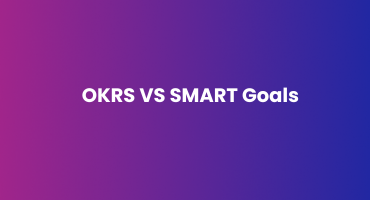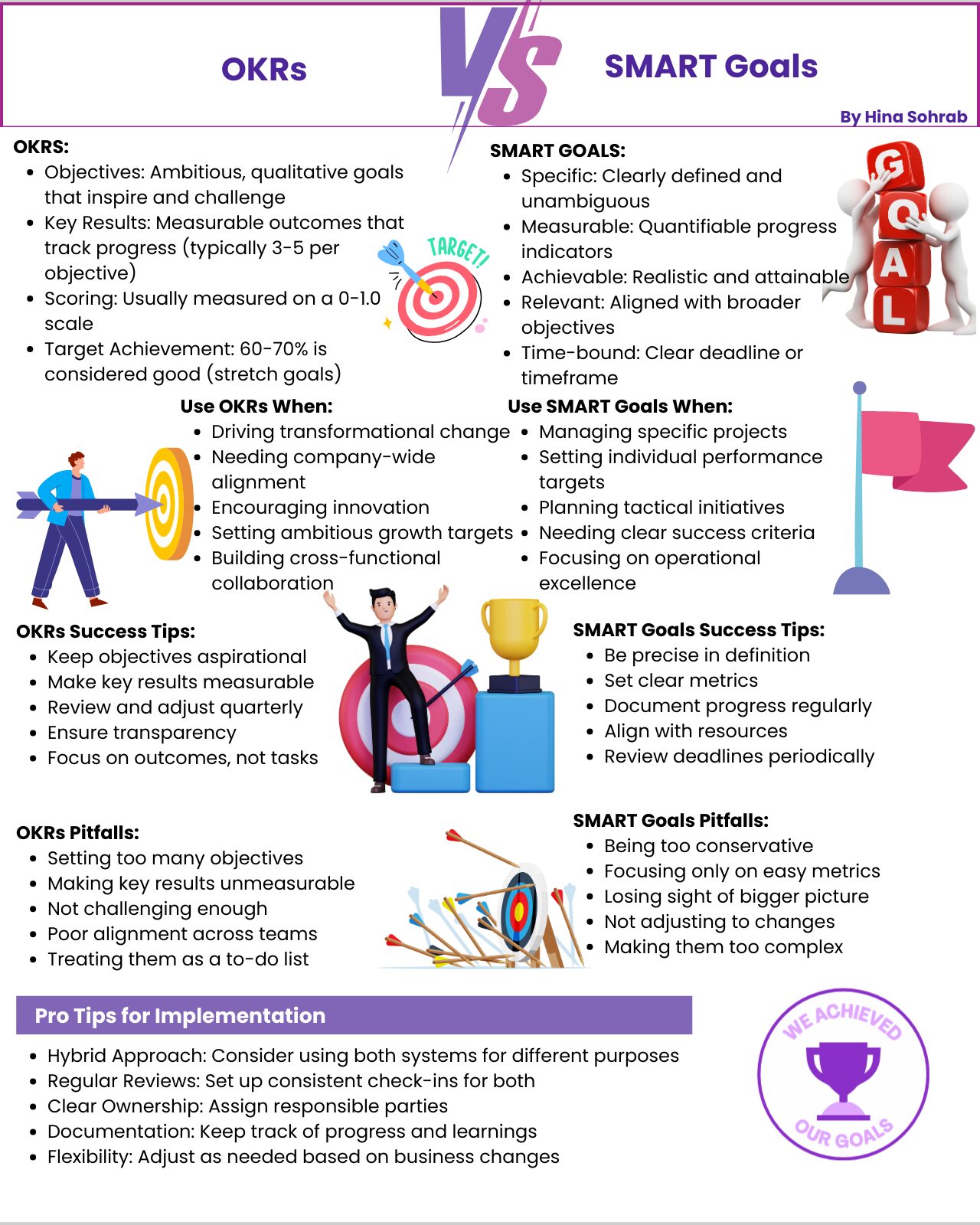
Choosing the right goal-setting framework can make all the difference in driving your business forward. Two of the most popular methods are OKRs (Objectives and Key Results) and SMART goals. Let’s take a closer look at the core concepts, key differences, and best practices for each.
Core Concepts
OKRs (Objectives & Key Results)
- Objectives: Ambitious, qualitative goals that inspire and challenge
- Key Results: Measurable outcomes that track progress (typically 3-5 per objective)
- Scoring: Usually measured on a 0-1.0 scale
- Target Achievement: 60-70% is considered good (stretch goals)
SMART Goals
- Specific: Clearly defined and unambiguous
- Measurable: Quantifiable progress indicators
- Achievable: Realistic and attainable
- Relevant: Aligned with broader objectives
- Time-bound: Clear deadline or timeframe
Key Differences

When to Use Each
Use OKRs When:
- Driving transformational change
- Needing company-wide alignment
- Encouraging innovation
- Setting ambitious growth targets
- Building cross-functional collaboration
Use SMART Goals When:
- Managing specific projects
- Setting individual performance targets
- Planning tactical initiatives
- Needing clear success criteria
- Focusing on operational excellence
Best Practices
OKR Success Tips:
- Keep objectives aspirational
- Make key results measurable
- Review and adjust quarterly
- Ensure transparency
- Focus on outcomes, not tasks
SMART Goals Success Tips:
- Be precise in definition
- Set clear metrics
- Document progress regularly
- Align with resources
- Review deadlines periodically
Common Pitfalls
OKR Pitfalls:
- Setting too many objectives
- Making key results unmeasurable
- Not challenging enough
- Poor alignment across teams
- Treating them as a to-do list
SMART Goals Pitfalls:
- Being too conservative
- Focusing only on easy metrics
- Losing sight of bigger picture
- Not adjusting to changes
- Making them too complex
Pro Tips for Implementation
- Hybrid Approach: Consider using both systems for different purposes
- Regular Reviews: Set up consistent check-ins for both
- Clear Ownership: Assign responsible parties
- Documentation: Keep track of progress and learnings
- Flexibility: Adjust as needed based on business changes
By understanding the nuances between OKRs and SMART goals, you can choose the right framework to drive your organization’s success. Remember, there’s no one-size-fits-all solution – the key is finding the approach that best aligns with your strategic objectives and culture.
Setup Goals in ClickUp
Learn How to Set Up Goals/OKRS in ClickUp in our upcoming webinar. Join Live session on How to Setup your goals using ClickUp
